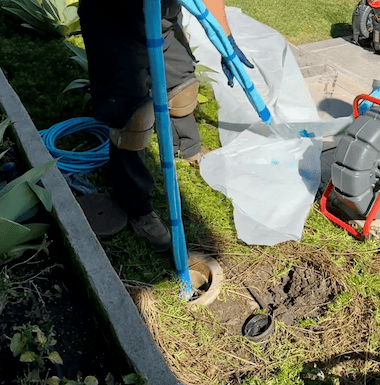When it comes to saving time, money, and avoiding the hassle and mess associated with sewer and drain pipe repairs, the key often lies in existing access points. Toilets, cleanouts, and roof vents can all serve as access points for our pipe lining process, allowing you to repair your drain and sewer pipes from the inside without the need to tear up floors or disrupt your landscaping.
What causes pipes to deteriorate?
As buildings age, plumbing problems become increasingly likely. Slow drains, leaks, and sewer odors are common red flags signaling potential plumbing issues. If your building is over 25 years old and experiencing these problems, it’s possible that your pipes are in need of attention. When it comes to fixing broken or corroded pipes, you have two options: replacing the pipes or rehabilitating them with pipe lining.
How can I fix old sewer pipes?
The traditional option is sewer pipe replacement, which involves removing the old pipes and installing new ones. While it may seem straightforward, gaining access to the pipes can be a complex and costly endeavor. Most sewer pipes are hidden behind walls, buried underground, or encased in concrete slabs. Accessing these pipes can result in significant property damage, including the need to tear down drywall, excavate yards, or jackhammer concrete slabs. This process can take weeks and lead to hefty bills for materials and labor.
On the other hand, restoring sewer pipes with pipe lining offers a more efficient and cost-effective alternative. This method repairs pipes from the inside, utilizing existing access points that are already part of the plumbing system, such as a toilet riser or two-way cleanout. Instead of replacing the entire pipe, an epoxy liner is inserted into the sewer pipe with an inflatable bladder. The bladder inflates to position the liner against the pipe’s interior wall while the epoxy resin cures in place. The result is essentially a “pipe within a pipe.”
What are the advantages of pipe lining?
One of the significant advantages of pipe lining is that it doesn’t require digging or wall demolition to repair the sewer pipe. By utilizing existing access points, the repair is conducted from a single location, minimizing property disruption.
The most common access point for pipe lining is a sewer cleanout, typically located on the outside of the property, providing access to the main sewer line. However, if a cleanout isn’t easily accessible, other options like a roof vent or a toilet riser can be used. These alternative access points can often be found on a property’s roof or in a parking garage, offering convenient solutions for homeowners or tenants.
Even in cases where traditional access points are unavailable, pipe lining can still save significant property damage. Technicians often only need one point of entry to the pipe, avoiding the need to excavate the entire length of the pipe. A simple patch of drywall or a small hole in the yard is a far less messy and disruptive solution compared to sewer pipe replacement.
If your property is experiencing recurring plumbing problems, it’s crucial not to ignore the signs. Contact a NuFlow Certified Contractor for a camera inspection and pipe diagnosis. An inspection will provide a clear view of any problem areas, allowing you to choose the most suitable option for your property, ultimately saving you time, money, and hassle.
